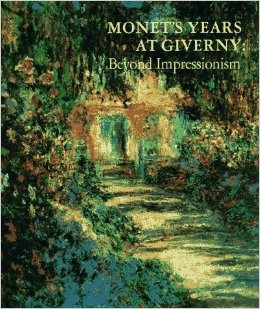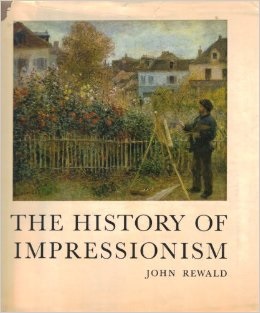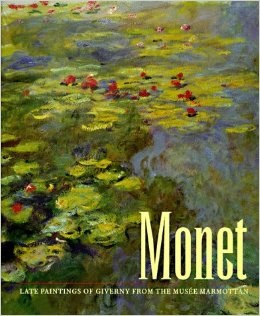 |
Monet's Years at Giverny: Beyond Impressionism 1995
Daniel Wildenstein - Author
This volume illustrates Monet's works from the last 40 years of his life at Giverny. It includes examples of the Haystacks, Poplars, Morning on the Seine, Japanese Footbridge and Water Lilies series, an account of Monet's life at Giverny and photographs of Monet and his house and garden.
|
 |
The History of Impressionism 1973
John Rewald - Author
The book is lively, heavily illustrated with photographs both in color and in black and white, and it covers to period from roughly 1855 to 1905 when the art movement called - derisively at first - Impressionism was born, matured, and ultimately became accepted. It chronicles the lives and struggles of artists such as Monet, Degas, Pisarro, Renoir, Manet, Moriset, Cezanne, Cassatt, and others. A struggle it truly was. What impressed me as a student and impresses me still is how hard they worked and with so little reward or recognition. Indeed, they were met with derision, laughter, and ridicule. It took decades for modest success to be achieved.
Their opponent was the establishment in the form of the French Academy, which controlled the artistic tastes of the time and for the world. Painters who today are largely forgotten, such as Cabanel, Gerome, and Bouguereau, where world famous, rich and powerful, and they controlled who got into the shows at the Salon. The Impressionists were almost entirely excluded. The academic painters gained all the benefits of the power of the French state to advance the arts, while those outside got little.
|
 |
Monet: Late Paintings of Giverny from the Musee Marmottan 1995
Lynn Federle Orr - Author
While Monet is my favorite Impressionist artist, I have little affection for most of the work he did in the last years of his life. However, "Monet: Late Paintings of Giverny from the Musee Marmottan" is about more than the work the artist did during the first part of the 20th-century. What is fascinating about this book is how it talks about Claude Monet as a skilled landscape designer who turned his garden at Giverny into a living canvas which served as the subject for almost all of his later work.
|
 2000.jpg) |
Monet (Basic Art Album) 2000
Christoph Heinrich - Author
Claude Monet (1840–1926), the most individual Impressionist painter, dedicated his long life to a pictorial exploration of the sensations which reality, and in particular landscape, offers the human eye. In his endeavor to capture the ever-changing face of reality, Monet went beyond Impressionism and thereby beyond the confines of self-contained panel painting: in Giverny he painted the Poplars, Grain Stacks and Rouen Cathedral series in which he addressed one motif in constantly new variations. Here, too, Monet laid out the famous garden with its water-lily pond which he was to paint on huge canvases well into the 1920s. He thereby sought to render not reality as objectively experienced, but rather that which takes place “between the motif and the artist.” In their open, merely tenuously representational structure and impressive scale, Monet’s water lily paintings—created long before the currents of the contemporary avant-garde—point the way to the developments of the future.
|





 2000.jpg)